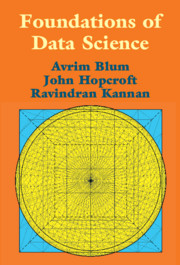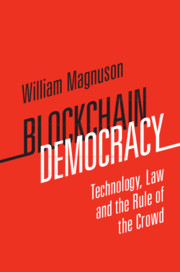Refine search
Actions for selected content:
48290 results in Computer Science
References
-
- Book:
- A First Course in Network Science
- Published online:
- 05 February 2020
- Print publication:
- 23 January 2020, pp 246-255
-
- Chapter
- Export citation
12 - Background Material
-
- Book:
- Foundations of Data Science
- Published online:
- 17 January 2020
- Print publication:
- 23 January 2020, pp 360-410
-
- Chapter
- Export citation
7 - Dynamics
-
- Book:
- A First Course in Network Science
- Published online:
- 05 February 2020
- Print publication:
- 23 January 2020, pp 186-220
-
- Chapter
- Export citation
Index
-
- Book:
- A First Course in Network Science
- Published online:
- 05 February 2020
- Print publication:
- 23 January 2020, pp 256-258
-
- Chapter
- Export citation
Elaborating dependent (co)pattern matching: No pattern left behind
- Part of
-
- Journal:
- Journal of Functional Programming / Volume 30 / 2020
- Published online by Cambridge University Press:
- 21 January 2020, e2
-
- Article
-
- You have access
- Open access
- Export citation
Free Heyting algebra endomorphisms: Ruitenburg’s Theorem and beyond
-
- Journal:
- Mathematical Structures in Computer Science / Volume 30 / Issue 6 / June 2020
- Published online by Cambridge University Press:
- 21 January 2020, pp. 572-596
-
- Article
- Export citation
Primitive recursion in the abstract
-
- Journal:
- Mathematical Structures in Computer Science / Volume 30 / Issue 1 / January 2020
- Published online by Cambridge University Press:
- 21 January 2020, pp. 33-43
-
- Article
- Export citation
An optimal, purely functional implementation of the Garsia–Wachs algorithm
- Part of
-
- Journal:
- Journal of Functional Programming / Volume 30 / 2020
- Published online by Cambridge University Press:
- 21 January 2020, e3
-
- Article
-
- You have access
- Export citation
On fast and scalable recurring link’s prediction in evolving multi-graph streams
-
- Journal:
- Network Science / Volume 8 / Issue S1 / July 2020
- Published online by Cambridge University Press:
- 20 January 2020, pp. S65-S81
-
- Article
- Export citation
Alin: improving interactive ontology matching by interactively revising mapping suggestions
- Part of
-
- Journal:
- The Knowledge Engineering Review / Volume 35 / 2020
- Published online by Cambridge University Press:
- 20 January 2020, e1
-
- Article
- Export citation
EQUILIBRIUM VALUATION OF CURRENCY OPTIONS UNDER A DISCONTINUOUS MODEL WITH CO-JUMPS
-
- Journal:
- Probability in the Engineering and Informational Sciences / Volume 35 / Issue 3 / July 2021
- Published online by Cambridge University Press:
- 20 January 2020, pp. 432-450
-
- Article
- Export citation

Foundations of Data Science
-
- Published online:
- 17 January 2020
- Print publication:
- 23 January 2020
Identifying key players in bipartite networks
-
- Journal:
- Network Science / Volume 8 / Issue 1 / March 2020
- Published online by Cambridge University Press:
- 17 January 2020, pp. 42-61
-
- Article
- Export citation
Extracting multilayer networks from Sentinel-2 satellite image time series
-
- Journal:
- Network Science / Volume 8 / Issue S1 / July 2020
- Published online by Cambridge University Press:
- 17 January 2020, pp. S26-S42
-
- Article
- Export citation
Examining the variability in network populations and its role in generative models
-
- Journal:
- Network Science / Volume 8 / Issue S1 / July 2020
- Published online by Cambridge University Press:
- 17 January 2020, pp. S43-S64
-
- Article
- Export citation

Blockchain Democracy
- Technology, Law and the Rule of the Crowd
-
- Published online:
- 16 January 2020
- Print publication:
- 02 January 2020
2 - The Nigerian Press: From Colonial Evangelism to Guerrilla Journalism
-
- Book:
- Nigeria's Digital Diaspora
- Published by:
- Boydell & Brewer
- Published online:
- 13 April 2021
- Print publication:
- 15 January 2020, pp 36-63
-
- Chapter
- Export citation
